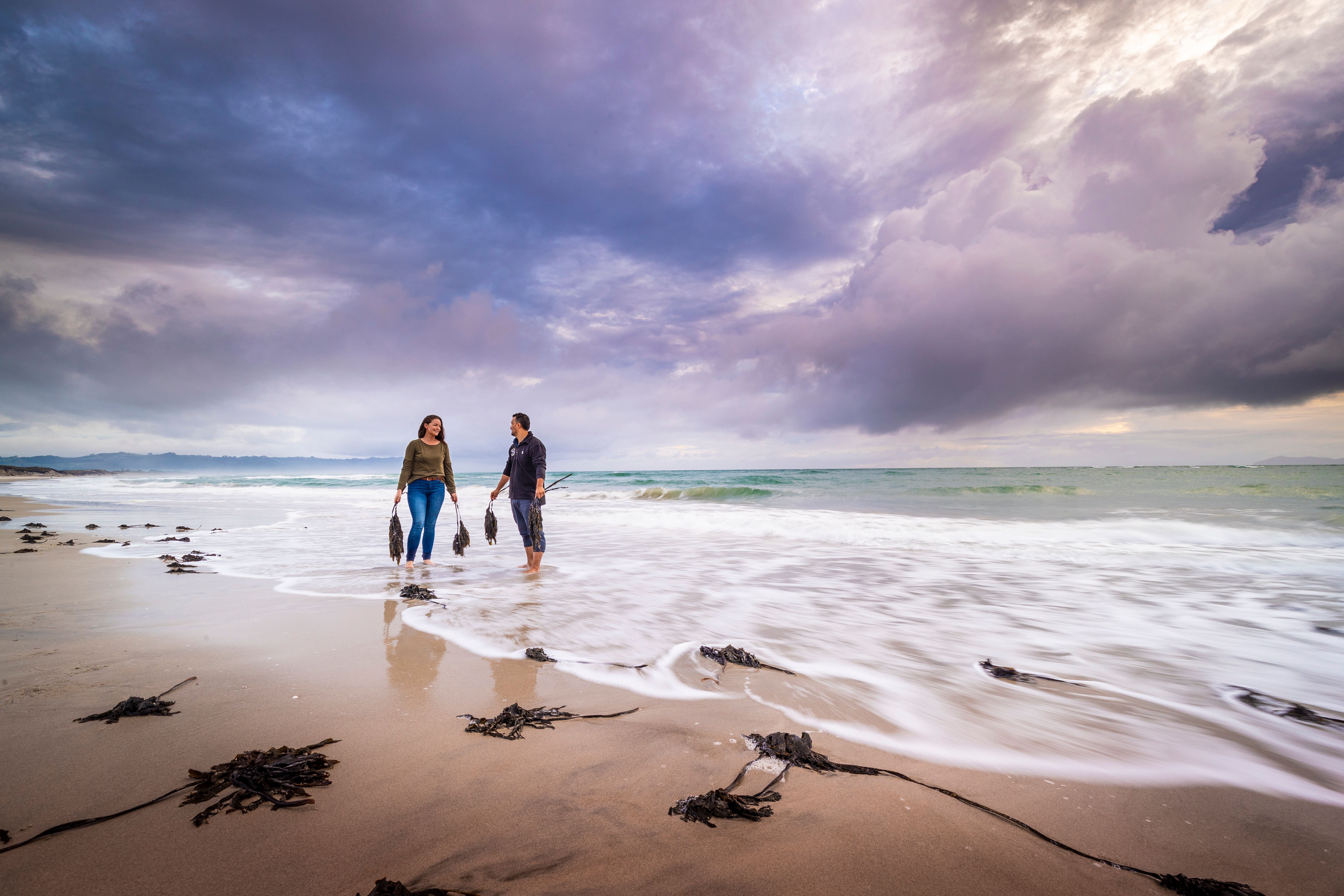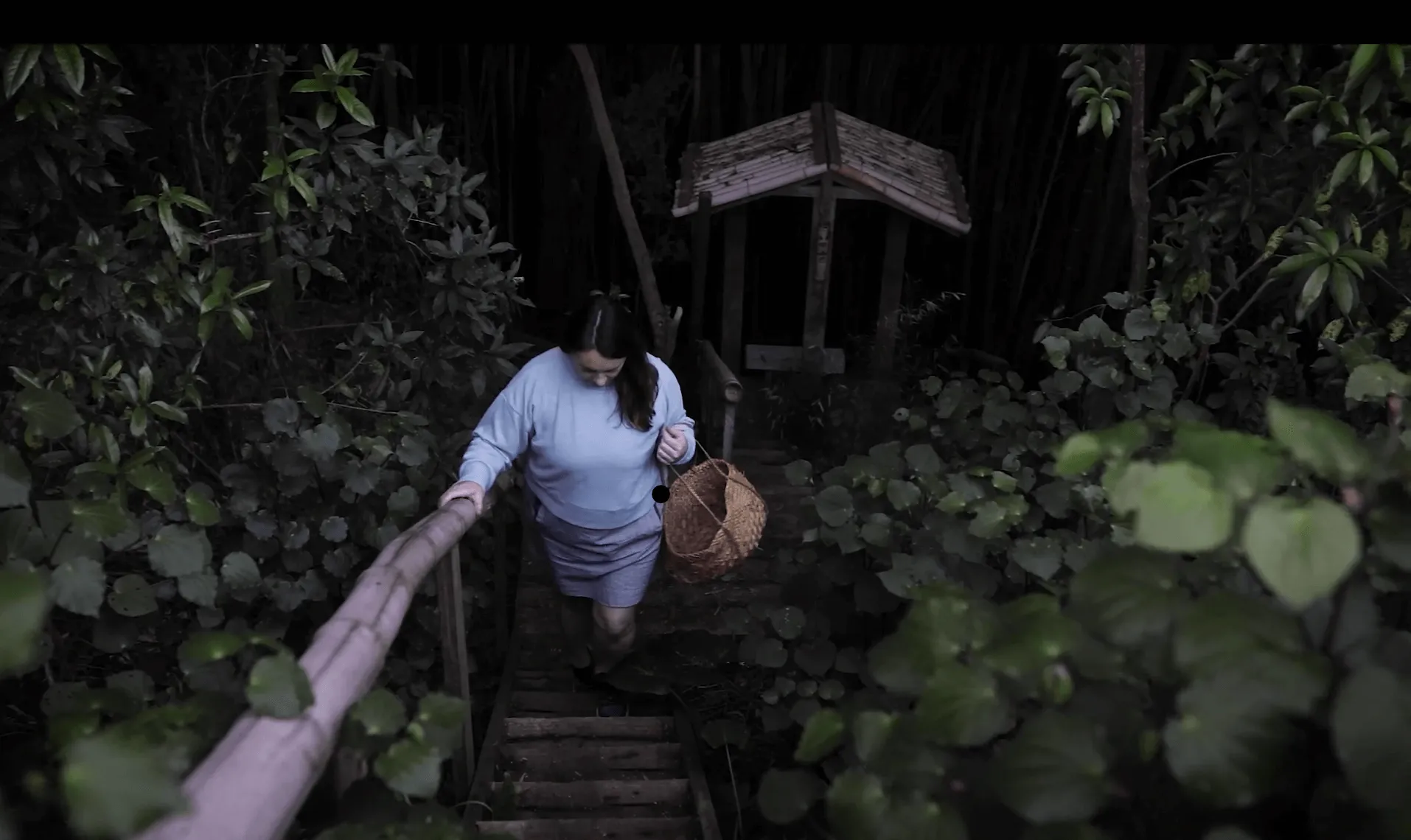
Sir Peter Jackson, Dame Fran Walsh
Peter Jackson’s passion for filmmaking began as a child. At the age of five, his parents purchased their first TV, and he was introduced to the world of fantasy and stop-motion animation through Thunderbirds and King Kong. His interest deepened when his parents acquired a Super 8 movie camera, which Peter used to create short movies with his friends from his home in Wellington.

“I’m so honoured, touched and relieved that the Academy and the members of the Academy that have supported us have seen past the trolls and the wizards and the hobbits and are recognising fantasy this year.”
Driven by his desire to make films, Peter left school at 17 to save for his first 16mm camera, working as a photo-engraver at The Evening Post. His first feature film, a science-fiction comedy horror, was shot over four years – mostly on Sundays when he had time off from his job. With support from the New Zealand Film Commission towards the end of the production, Bad Taste was completed in time for the 1988 Cannes Film Festival. It was an instant hit, selling to more than 30 countries within 48 hours, and became the fastest-selling New Zealand film of all time.
Over the coming years, Peter worked on several film scripts in collaboration with Fran Walsh, a musician, lyricist, and scriptwriter. She also grew up in Wellington and was a member of punk band The Wallsockets. Fran started writing scripts for TV programmes Shark in the Park and Worzel Gummidge Down Under after graduating from Victoria University of Wellington, Te Herenga Waka, in 1981.
They met during the post-production of Bad Taste and went on to become partners – both in film and in life. It was Fran’s idea to make Heavenly Creatures, a biographical psychological drama film the pair co-wrote and released in 1994. The film received widespread critical acclaim, earning a Best Original Screenplay nomination at the Academy Awards, and helped to establish them as formidable talents in the industry.
Their partnership continued to flourish. While finishing supernatural comedy film The Frighteners, Peter and Fran decided they wanted to make an original fantasy film but could not find a suitable plot that wasn’t reminiscent of J.R.R. Tolkien’s work. Although they assumed the rights to The Lord of the Rings would be unavailable, they made enquiries to see if it would be possible.
Finding funding for the ambitious project proved more challenging. Budgetary constraints at Miramax, which had helped to secure the rights, meant the production company wanted the trilogy to be made into a single film. Peter and Fran weren’t happy with this. Almost walking away from the project entirely, they decided to speak with other production companies. Eventually, New Line Cinema recognised the potential of the project and agreed to fund a trilogy based on the books.
The trilogy – The Fellowship of the Ring (2001), The Two Towers (2002) and The Return of the King (2003) – was shot simultaneously in New Zealand, in more than 150 locations across both the North and South Islands. It was one of the biggest and most ambitious film projects ever undertaken, with a budget of almost US$300 million.
All three films captured the hearts of audiences worldwide and received widespread acclaim from critics due to their meticulous attention to detail, breathtaking visuals, and masterful storytelling. Their success at the box office was unprecedented, grossing nearly US$3 billion worldwide.
The series received 30 Academy Award nominations, winning 17 of them. The Lord of the Rings: The Return of the King won all 11 categories for which it was nominated, placing it first-equal for the most Oscars won (tied with Titanic and Ben-Hur), and setting a record for the highest clean sweep of awards – a record that still stands today. Its wins included Best Picture for Peter, Fran, and Barrie Osborne; Best Adapted Screenplay for Peter, Fran, and Philippa Boyens; and Best Director for Peter. Fran also won for Best Original Song.
It was the first time the Academy Awards recognised a fantasy film for Best Picture, to which Peter remarked in his acceptance speech:
“I’m so honoured, touched, and relieved that the Academy and the members of the Academy that have supported us have seen past the trolls and the wizards and the hobbits and are recognising fantasy this year.”
In addition to its critical and commercial success, the trilogy had a lasting impact on popular culture. The Fellowship of the Ring was selected for preservation in the United States National Film Registry by the Library of Congress, for being “culturally, historically or aesthetically significant”. The use of Aotearoa New Zealand’s stunning landscapes in the Lord of the Rings films has seen the country become synonymous with the franchise and widely recognised as ‘Middle-Earth’. The trilogy has been a significant contributor to New Zealand, with tourists coming from all over the world to experience the country’s natural beauty.
Peter, Fran, and Philippa continued their work together on the screenplay for the 2005 remake of King Kong and went on to make the prequel to The Lord of the Rings trilogy with a three-film adaptation of Tolkien’s The Hobbit.
Peter’s digital special effects company, Weta Digital (now WētāFX), was founded in 1993 with Richard Taylor and Jamie Selkirk to produce the special effects needed for Heavenly Creatures. It has since been involved with some of the highest-grossing films ever made, including the Lord of the Rings trilogy and Avatar, is a major employer in Wellington, and an important contributor to the industry worldwide.
Peter and Fran’s innovative use of technology and visionary storytelling has had a lasting impact on the world of cinema. Their influence continues to be seen in the fantasy films and TV that have followed The Lord of the Rings, which often borrow from its visual style, themes and storytelling techniques. They have played an important role in establishing New Zealand as a significant player in the film industry, bringing numerous international productions here to take advantage of the spectacular scenery, talent, and technical expertise.
In collaboration with London’s Imperial War Museum, Peter directed the award-winning documentary They Shall Not Grow Old, released in 2018 to commemorate the centenary marking the end of World War I. Detailing the experience of the average soldier, original footage from 100 years ago underwent ground-breaking new restoration techniques developed by Peter and Fran’s company Park Road Post. The result was breathtaking, giving the footage a clarity never before seen. This unique documentary was acclaimed by critics and enjoyed by audiences worldwide.
Since 2018, Peter has been working closely with The Beatles on several projects, including The Beatles: Get Back, released in 2021. This seven-and-a-half-hour documentary was made entirely from unseen footage The Beatles shot in 1969, and kept locked in a vault. Peter was the first person to access it in over 50 years. While making the documentary Peter led the development of revolutionary new software enabling all the instruments in a mono song recording to be separated onto their own tracks, subsequently using this technology to help remix over 70 of their greatest songs.
Explore the Legacy Project
.jpg)
Explore the Legacy Project
.jpg)
Explore the Legacy Project
.jpg)


.jpg)


